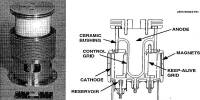Buildings produce one-third of global greenhouse gas emissions, which is almost ten times higher than global air traffic. Each year, over 190 million square meters of dwelling space are developed in Europe, primarily in cities, and the volume is rapidly increasing at a rate of nearly one percent each year.
According to a recent study conducted by academics at Aalto University and the Finnish Environment Institute, switching to wood as a building construction material will drastically reduce building construction’s environmental impact.
According to the findings, if 80 percent of new residential buildings in Europe were made of wood, with wood employed in the structures, cladding, surfaces, and furnishings, the buildings would store 55 million tons of CO2 each year. This equates to roughly 47% of the cement industry’s annual emissions in Europe.
‘This is the first time that the carbon storage potential of wooden building construction has been evaluated on the European level, in different scenarios,’ explains Ali Amiri, who is completing his doctorate at Aalto University. ‘We hope that our model could be used as a roadmap to increase wooden construction in Europe.’
The research is based on a thorough review of the literature. The researchers used 50 case studies to categorize buildings into three categories based on how much wood they use and, as a result, how much carbon dioxide they store.
The group with the least amount of wood stored 100 kilograms of CO2 per square meter, the intermediate group 200 kilograms, and the group with the most wood 300 kilograms per square meter (CO2 kg m2).
Certificates for green buildings used around the world, such as LEED and BREEAM, could better take the climate benefits of wood construction into account. So far, they are strongly focused on how energy is consumed during use.
Ali Amiri
The number and volume of wood used as structural components, from beams and columns to walls and finishes, determine the potential carbon storage capacity.
The researchers also looked at how Europe may achieve the massive reduction by modeling a path to a 55 million tons per year reduction by 2040. If, say, 10% of new residential structures in 2020 were made of wood, each storing 100 kg CO2 per m2, the proportion of wood-built buildings would need to steadily increase to 80% by 2040.
Simultaneously, the scenario calls for a move to timber structures that store even more CO2, with more buildings falling into the 200 CO2 kg m2-storage category, and eventually the 300 CO2 kg m2-storage category.
The most common metric for assessing a building’s environmental impact is its energy efficiency. Energy efficiency, on the other hand, necessitates additional insulation, effective heat recovery, and better windows. In fact, roughly half of a zero-energy house’s carbon footprint occurs before anyone has even lived in it.
The importance of the construction phase of the building’s total environmental impact becomes, even more, when the energy utilized in housing comes more from renewable sources.
“Certificates for green buildings used around the world, such as LEED and BREEAM, could better take the climate benefits of wood construction into account. So far, they are strongly focused on how energy is consumed during use,” Amiri says.
In terms of wood goods, a wooden structure can store carbon for a longer period of time than pulp or paper. According to the conclusions of the study, a 100 m2 timber construction has the capacity to retain 10 to 30 tons of carbon dioxide. The highest range represents the carbon dioxide emissions of an average motorist over a ten-year period.
“Wood construction is sustainable only if the wood comes from forests that are grown in a sustainable manner. Shifting from short-lived products, like paper, to products with a long life-cycle, like wooden construction materials, would help minimise the impact on European forests and the crucial carbon sinks they hold,” says postdoctoral researcher Juudit Ottelin.
















